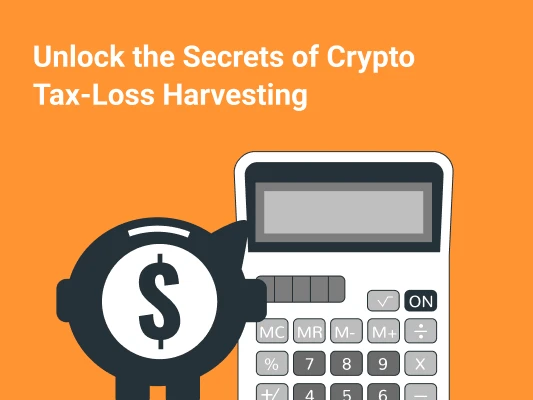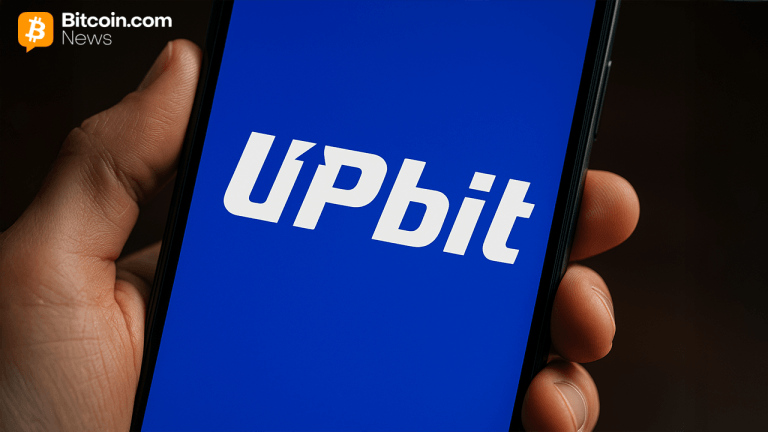
Are you ready to take control of your crypto investments and make the most out of them, even during the crypto winter? Cryptocurrency investing can be stressful during market downturns, but understanding tax-loss harvesting may help you reach the next bull market safely!
Tax-loss harvesting is a strategy used by many investors to maximize their savings when taxes come due, yet few people know how to leverage this powerful tool in their crypto funds.&
In this post, we will uncover all the secrets behind tax-loss harvesting to ensure maximum tax efficiency while investing in crypto. Stop missing out on any potential profits and finally unlock maximum returns from your cryptocurrency portfolio!
What is Tax-Loss Harvesting?
Tax-Loss Harvesting is a process of strategically taking advantage of capital losses in the cryptocurrency market. It is a powerful tool that can help reduce your tax burden and increase your net worth.&
Tax-Loss Harvesting involves selling assets at a loss and buying the same or other similar assets to replace them. This allows for investors to take advantage of temporary price declines and offset capital gains with the losses incurred from selling the original asset. The result is that an investor can effectively "harvest" their losses to decrease their overall tax bill.
Tax-Loss Harvesting in Crypto
It's no secret that the crypto market is currently in a bear phase, with most coins dropping over 50% from their all-time highs. Any investor that has lost value on their crypto position has the ability to sell the investment, capture the capital loss, and then reinvest the funds back into the market.
The way cryptocurrency losses are treated by the IRS is similar to how stock losses are treated. A capital loss occurs when you sell a security at a lower price than what you purchased it for, resulting in a financial loss. Cryptocurrency losses work in much the same way — if an investor purchases a certain amount of crypto at one price, then sells them at a lower price, they will have incurred a capital loss. This capital loss can then be used to offset any other gains an investor has during that tax year as well as up to $3,000 of ordinary income.
Example: Let’s say you bought 1 bitcoin at $20,000 with the intention of keeping it due to its strong long-term outlook. However, as the price dropped to $17,000 in the short term, you can sell that bitcoin and claim a $3,000 capital loss. You can then immediately rebuy it at the same price, not including the processing fees.&
This way, you can offset $3,000 worth of taxes, regardless if they are coming from crypto or not. You can offset taxes from other assets such as stocks, bonds, real estate investments, and even up to $3,000 of your earned income.&
Check out our guide on understanding crypto taxes to learn more about managing your crypto holdings in a proper way.&
Why Should You Harvest Cryptocurrency Losses?
Harvesting cryptocurrency losses may seem like an unnecessary extra step for those who have already made investments in the digital asset market, but it’s an important part of the investment process that can yield significant rewards. By understanding and taking advantage of the tax implications of cryptocurrency losses, investors can reduce their taxable income, save money on taxes, and potentially increase their returns on investment.
By harvesting these losses, investors are able to deduct some or all of their capital losses from their taxable income, potentially saving considerable amounts in taxes. Investors should also keep track of their unrealized losses — when they purchase crypto but do not sell them — as these can also be used to further reduce taxable income.
Although there is no guarantee that harvesting crypto-asset losses will always result in increased returns on investment or financial savings due to factors such as market volatility, it is still worth considering for anyone making regular investments in the digital asset markets. Tax implications must always be taken into consideration when investing, and harvesting cryptocurrency losses could prove beneficial over time if done correctly.

How to Harvest Cryptocurrency Losses?
The first step in harvesting cryptocurrency losses is understanding the tax rules for different types of crypto transactions. Generally, any sale or trade of crypto assets is treated as a taxable event, meaning you must either pay taxes on any profits or claim losses if there are any.&
Next, determine which transactions qualify as realized losses versus unrealized losses. Realized losses occur when an asset has been sold at a lower price than what it was purchased for and generates a taxable gain or loss for that year; this could happen if Bitcoin were bought for $20,000 and sold for $17,000 later in the year. Unrealized losses occur when an asset’s value goes down in value but has not yet been sold; these don’t create taxable events unless they are sold at some point in order to realize those losses.
Once you know which transactions qualify for realized or unrealized loss treatment, you can begin harvesting cryptocurrency losses by selling off assets with large unrealized losses to reduce any potential capital gains taxes from other investments in your portfolio. At this point, you have three options:&
- Reinvest in the same asset
- Reinvest in a different asset&
- Wait until a later date before repurchasing
When repurchasing the same asset, investors are able to "carry forward" their losses and use them to offset future gains when they sell those assets at a profit. This technique is especially useful when dealing with stocks or other investments since it allows investors to recognize their losses without having to incur additional taxes on any potential profits. As such, it provides a way for investors to potentially reduce their taxes while still maintaining exposure to potential upside opportunities within the market.
Finally, make sure you keep all records up-to-date so that you can report all trades accurately when filing taxes each year; this includes noting down details such as purchase price, sale price, and date of transaction for every single transaction made during the year. With proper record keeping, you will be able to easily track progress and identify areas where loss harvesting could benefit you most effectively over time.
Tips for Successful Crypto Tax-Loss Harvesting
Let’s explore some tips that could help you improve your tax-loss harvesting!
FIFO vs. LIFO Accounting
It’s important to note that when it comes to calculating your taxes due, it’s understood that you will be using the “first-in-first-out” (FIFO) method of accounting. FIFO means that the first asset purchased should be the first one sold, so that any gains or losses are calculated accordingly.
However, if you choose to opt for the “last-in-first-out” (LIFO) method of accounting, you have to specify it with your tax officials.&
You Can Tax-Loss Harvest NFTs
Non-fungible tokens (NFTs) are also considered a type of cryptocurrency. Therefore, any losses that occur while investing in NFTs could be used to offset your taxes by tax-loss harvesting.&
Wash Sale Rule in Crypto
At the moment, the IRS has a “wash sale rule” in place in order to prevent investors from claiming capital losses and immediately rebuying the same security.&
However, cryptocurrencies are not considered securities like stocks or bonds, meaning that the wash sale rule is not applicable.
Short-Term vs. Long-Term Gains in Tax-Loss Harvesting
We have to differentiate between long-term and short-term trades as they are taxed differently — long-term capital gains are taxed at a lower rate in the U.S.
If you cash in your crypto investment more than a year from your initial investment, it will be considered a long-term investment, and therefore be taxed as a long-term capital gain or loss.& &
Portfolio Rebalancing
One common approach to tax-loss harvesting in crypto investing is rebalancing portfolios regularly. This involves selling off assets that have lost their value and replacing them with new ones that offer similar potential returns with lower risk profiles. This helps investors maintain a diversified portfolio while also allowing them to take advantage of any losses that may have occurred due to market volatility or other factors.&
Additionally, rebalancing ensures that portfolios remain optimized for maximum returns over time rather than focusing solely on short-term gains or losses.
Ultimately, tax-loss harvesting is an important tool for any investor looking to maximize returns on their crypto investments while minimizing their overall tax burden and risks associated with market volatility. By implementing regular portfolio rebalancing strategies, investors can stay ahead of market fluctuations while taking advantage of opportunities as they arise, ultimately helping them reach their long-term financial goals more quickly and efficiently.
Is There a Limit to Crypto Tax-Loss Harvesting?&
Whenever total capital losses for the year add up to a negative number, you have officially incurred a capital loss.&
If that loss is less than or equal to $3,000 (or $1,500 if you are married and filing a separate tax return), then the entire capital loss could be used to offset your other types of income — including the income from your job.Net losses that go above $3,000 are rolled forward so you could use them to offset gains in the years ahead.
However, if we are talking about offsetting capital gains with capital losses, there is absolutely no limit to it.&
Risks and Considerations of Crypto Tax-Loss Harvesting&
As it goes for anything else in life, tax-loss harvesting doesn’t come without risk either. There are several risks you have to consider when tax-loss harvesting crypto, namely:&
- Tax rate change
- Token liquidation in the short-term
- Exchange fees
The first major risk to crypto tax-loss harvesting is that tax rates for capital gains could go up in the future. Since we are essentially deferring taxes with tax-loss harvesting, it’s possible that tax rates for capital gains will go up and ruin our strategy.&
The second risk comes into play when you are planning to liquidate your holdings soon.& If you are planning to sell your crypto in the near future, you may want to be cautious about harvesting your losses, as you will have to pay the short-term capital gains tax instead of the long-term one.
Last but not least, we have to consider how much we will pay in exchange fees to sell and rebuy our holdings. If the tax savings do not cover exchange fees, tax-loss harvesting is not a strategy you want to use.&
How Can I Start Tax-Loss Harvesting?&
Whether you’re trading, yield farming, or buying NFTs, the main prerequisite to tax-loss harvesting is tracking your transactions in a proper manner. At CoinStats, you can track all your crypto, DeFi, and NFT investments, and have your entire portfolio managed from one place.&
Additionally, with the new tax reporting feature we have implemented in partnership with CoinLedger, you can now generate tax reports in just a few clicks. Check out our article on tax reporting and get 10% off on generating your tax report.

You can get bonuses upto $100 FREE BONUS when you:
💰 Install these recommended apps:
💲 SocialGood - 100% Crypto Back on Everyday Shopping
💲 xPortal - The DeFi For The Next Billion
💲 CryptoTab Browser - Lightweight, fast, and ready to mine!
💰 Register on these recommended exchanges:
🟡 Binance🟡 Bitfinex🟡 Bitmart🟡 Bittrex🟡 Bitget
🟡 CoinEx🟡 Crypto.com🟡 Gate.io🟡 Huobi🟡 Kucoin.


















Comments